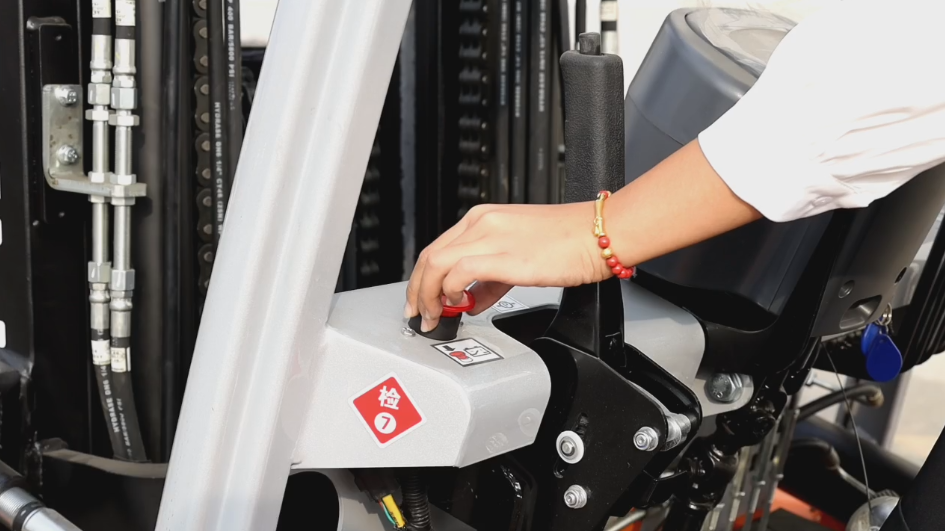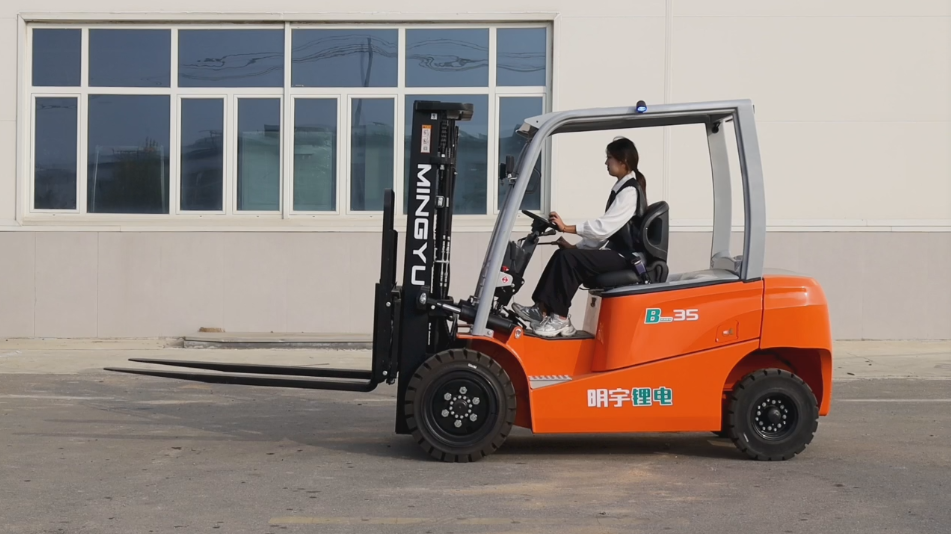Electric forklifts have revolutionized the material handling industry, offering numerous advantages over their gas-powered counterparts. Their quiet operation, zero emissions, and lower maintenance costs make them a popular choice for warehouses, distribution centers, and manufacturing facilities. However, to harness the full potential of these machines, it's crucial to understand how to start and operate them safely and efficiently.

Pre-Start Checks: A Foundation for Safe Operation
Before even stepping into the forklift cab, it's essential to conduct a thorough pre-start inspection. This routine check ensures the forklift is in optimal condition and ready for operation:
-
Battery Level:
- Visual Inspection: Check the battery gauge to assess the remaining charge.
- Battery Condition: Look for any signs of damage, leaks, or corrosion.
- Charging Status: Ensure the battery is fully charged or connected to a charger.
-
Hydraulic Fluid Level:
- Fluid Level: Verify that the hydraulic fluid level is within the specified range.
- Fluid Quality: Check for any contamination or discoloration.
-
Tire Pressure:
- Inspection: Visually inspect the tires for wear, damage, or uneven wear patterns.
- Pressure Check: Use a tire pressure gauge to measure the air pressure in each tire.
- Adjustment: Adjust the tire pressure to the manufacturer's recommended level.
-
Safety Checks:
- Horn: Test the horn to ensure it's functioning correctly.
- Lights: Verify that all lights, including headlights, brake lights, and turn signals, are working.
- Seatbelt: Ensure the seatbelt is in good condition and properly fastened.
- Controls: Check the steering wheel, pedals, and hydraulic levers for smooth operation.
- Emergency Stop: Test the emergency stop button to ensure it functions as intended.
Entering the Cab: A Safe and Secure Start
- Clear the Area: Ensure the area around the forklift is free of obstructions and personnel.
- Enter the Cab: Carefully step into the cab, avoiding any sudden movements.
- Adjust the Seat: Position the seat to a comfortable height and distance from the controls.
- Adjust the Steering Wheel: Adjust the steering wheel to a comfortable position.
- Fasten the Seatbelt: Securely fasten the seatbelt to minimize the risk of injury in case of an accident.
Starting the Forklift: A Step-by-Step Guide
- Insert the Key: Insert the ignition key into the keyhole.
- Turn the Ignition: Turn the key to the "On" position.
- Engage the Parking Brake: Depress the parking brake pedal to ensure the forklift remains stationary.
- Check the Dashboard: Review the dashboard for any warning lights or error messages.
- Release the Parking Brake: Gently release the parking brake.
- Operate the Controls: Use the steering wheel, foot pedals, and hydraulic levers to maneuver the forklift.
Operating the Forklift: Essential Tips
- Maintain a Safe Speed: Avoid excessive speed, especially in tight spaces or on inclines.
- Load Capacity: Never exceed the forklift's rated load capacity.
- Proper Lifting Techniques: Lift and lower loads smoothly and avoid sudden movements.
- Visual Awareness: Maintain constant awareness of your surroundings, including pedestrians and other vehicles.
- Emergency Stops: Practice using the emergency stop button in case of unexpected situations.
- Regular Maintenance: Schedule regular maintenance checks to keep the forklift in optimal condition.
Safety First: A Priority for Every Operator
- Operator Training: Ensure all operators are properly trained and certified.
- Personal Protective Equipment (PPE): Wear appropriate PPE, including safety helmets, safety shoes, and safety glasses.
- Avoid Distractions: Minimize distractions while operating the forklift.
- Follow Safety Guidelines: Adhere to all safety regulations and procedures.
- Report Issues: Immediately report any malfunctions or safety concerns.
With guidelines and prioritizing safety, you can effectively operate an electric forklift and contribute to a safer and more efficient workplace. Remember, a well-maintained and properly operated forklift is a valuable asset that can enhance productivity and reduce the risk of accidents.
Post time:Nov.18.2024

